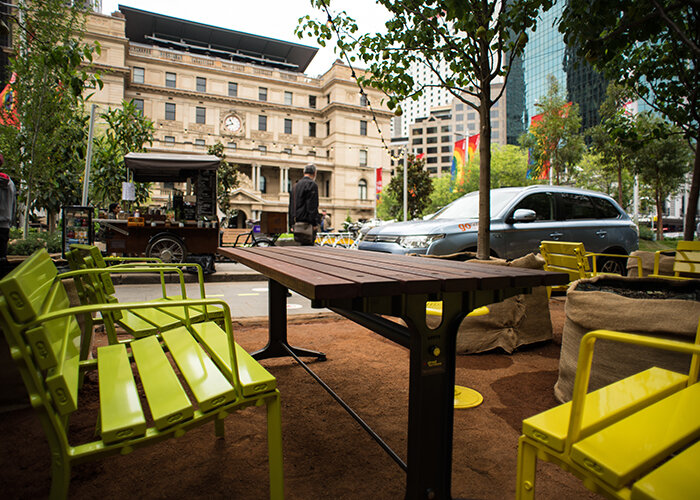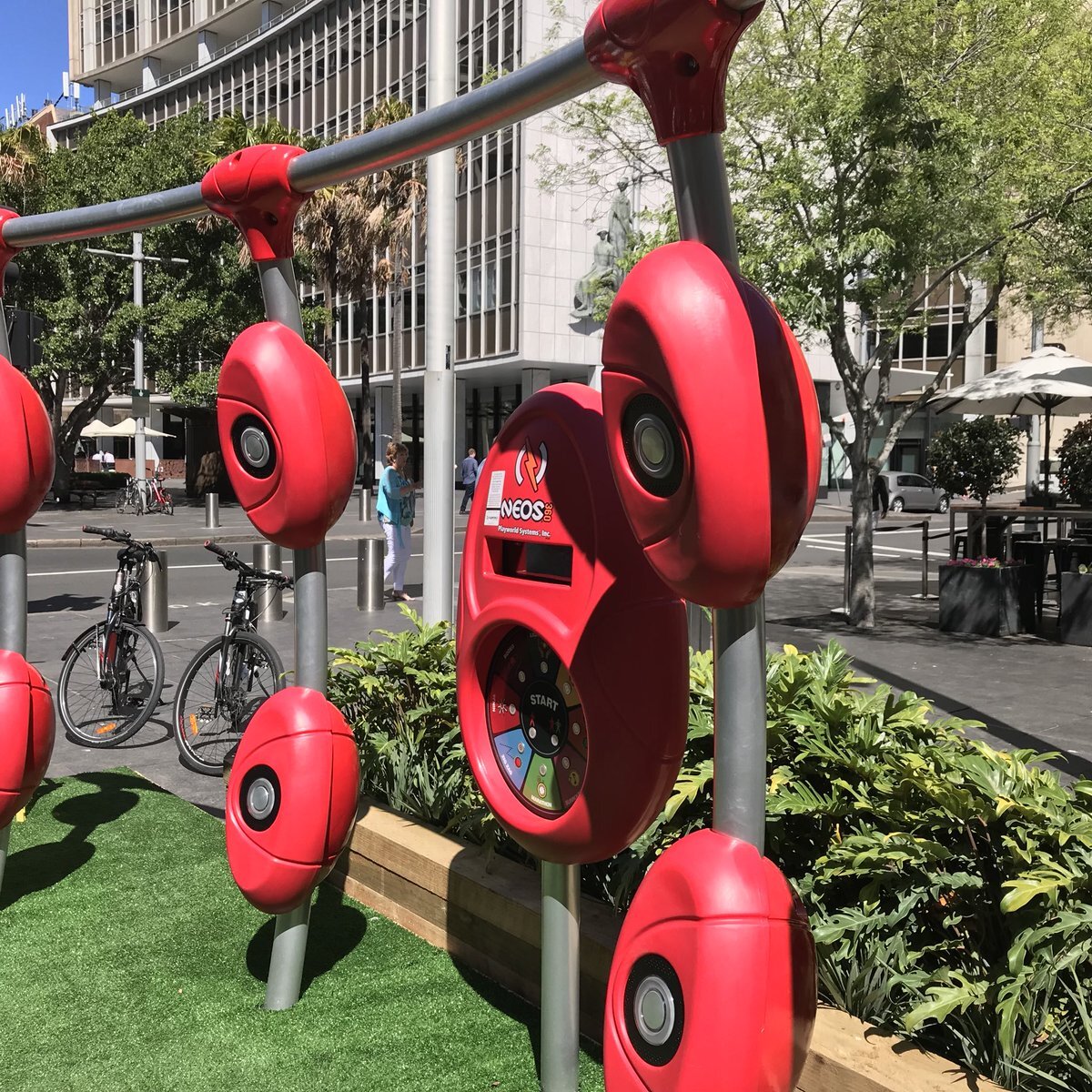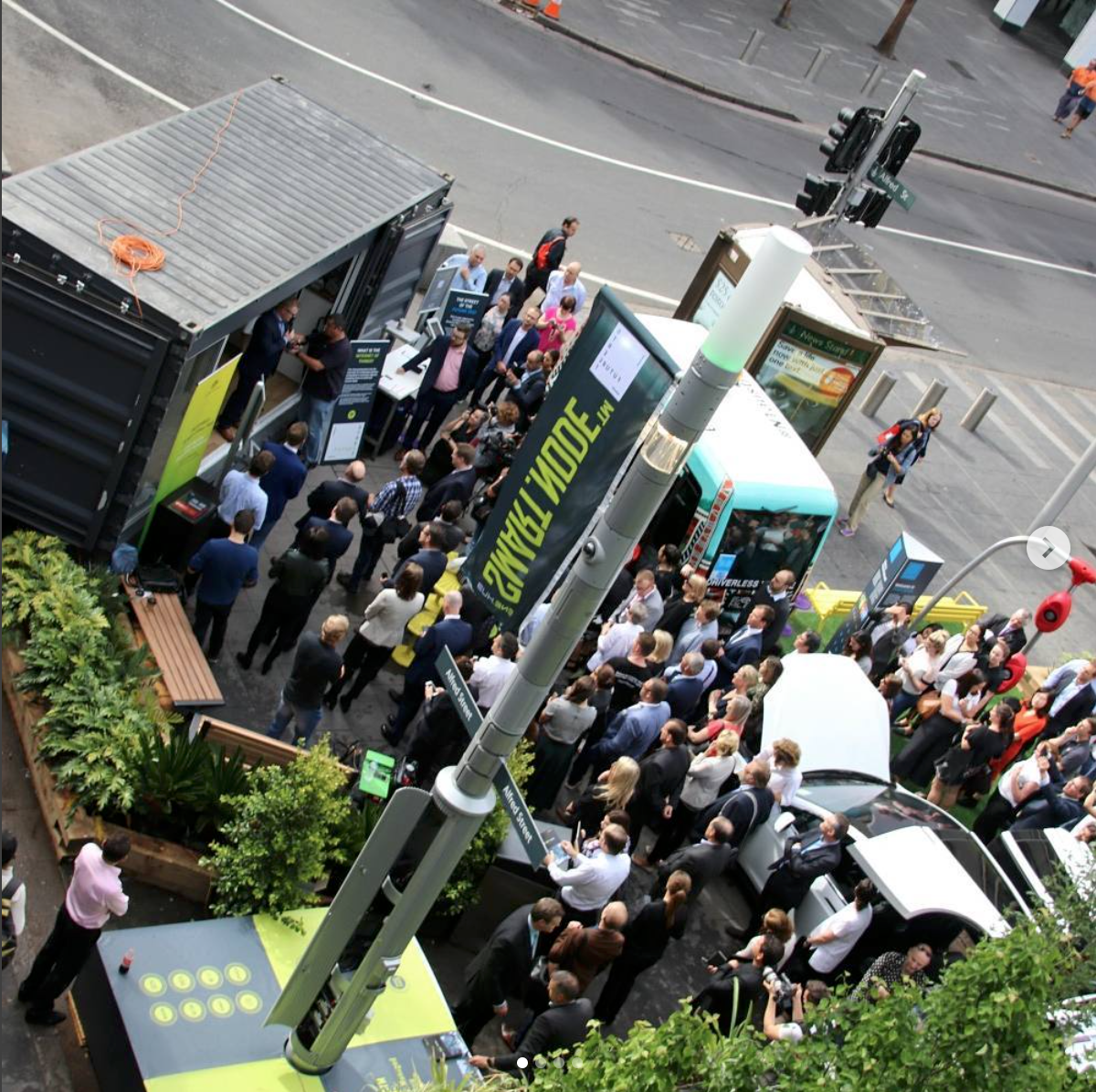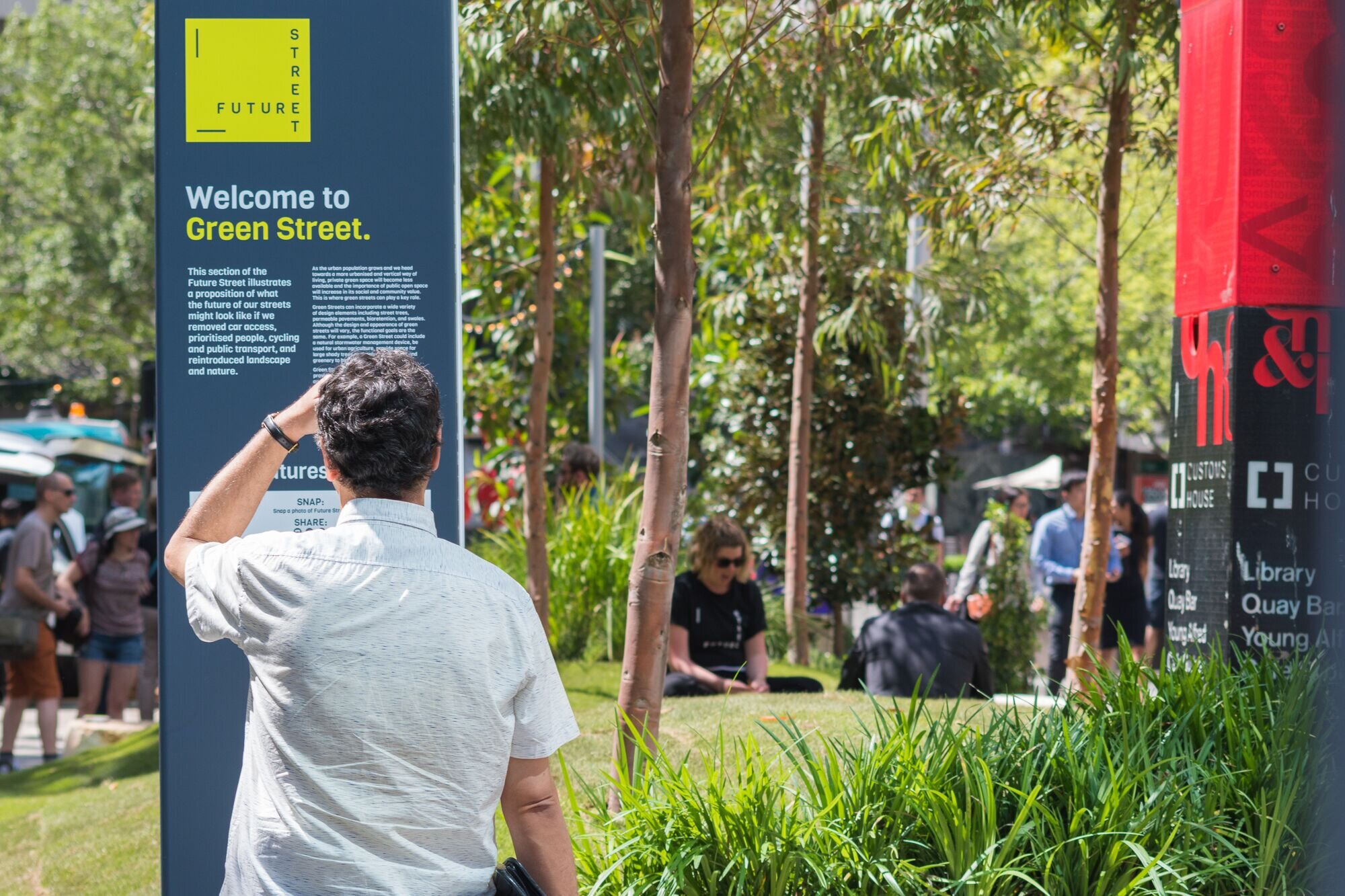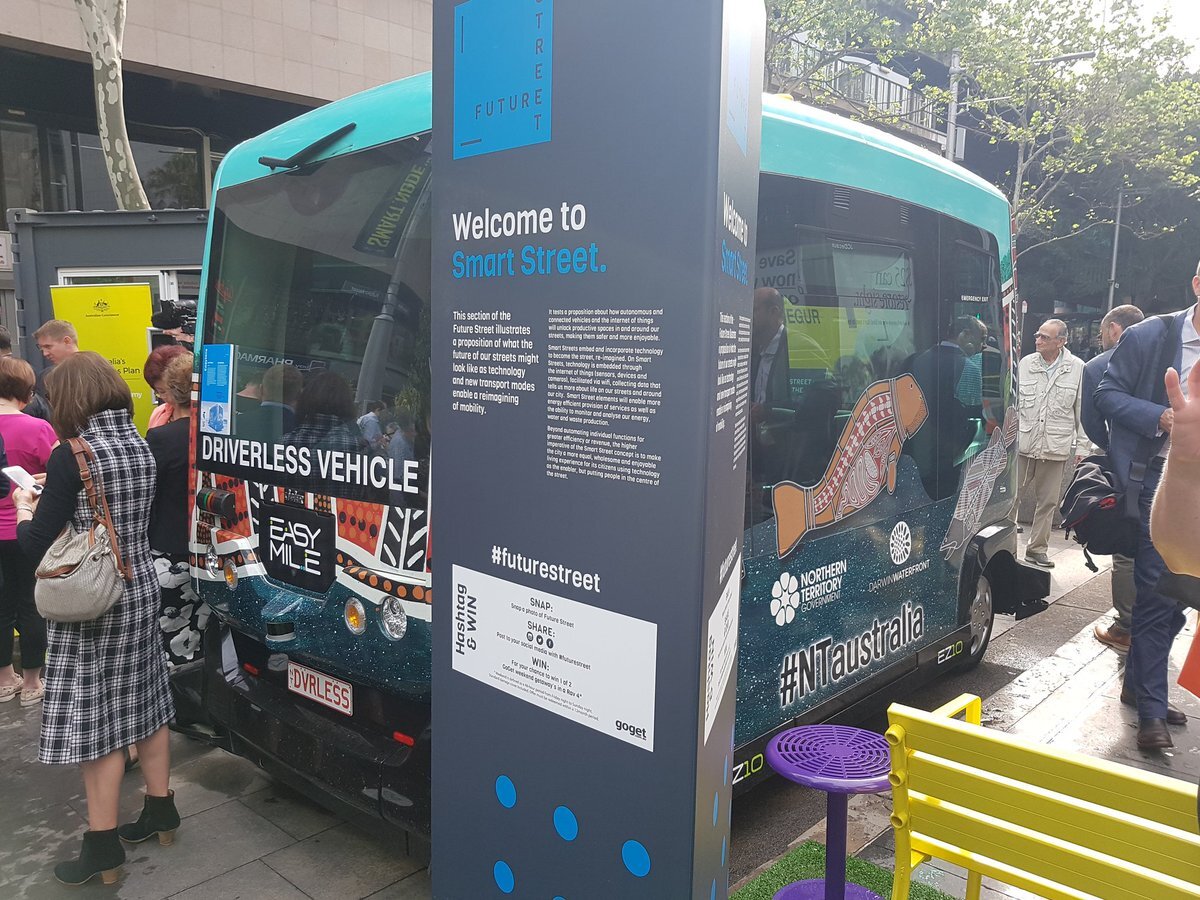How do you design and build a street of the future in just 3 weeks?
FUTURE STREET
Before Covid and the thousands of cities around the world that moved to green their streets and cities; was the Future Street.
In 2020 across the world local, state and Federal governments moved to provide shade, shelter, planting, new pathways and cycleways and hybrid green and blue infrastructure across their cities - in particular using the breathing space of covid and the demands of the locked down populace to provide better streets which were more amenable to the many people no longer travelling but needing to walk, cycle and exercise in constrained perimeters around their houses.
Foresight: In 2017 there was a reimagining of the city and the street that predicted many of the trends that followed thereafter.
In Circular Quay Sydney; where the ferries, trains and buses take tired Sydney workers home every day, is a street that no longer exists but which was radically reiminagined and repurposed for a week long festival.
100 tonnes of soil, 2100 plants, 24 sandstone blocks, timber sleepers, a surplus of technology, 7 of us designing and building day and night - and 1 actual week to build a street of the future in the heart of Sydney, Circular Quay made the Future Street.
What if we were to dedicate less of our public spaces to cars and return them for people’s use? What new and exciting mobility options are arriving this century and how can we better live and enjoy our cities and streets?
These questions and more were addressed in the Future Street - a project designed to showcase innovative ideas around how landscape, infrastructure and technology can advance our cities, suburbs and towns to become more liveable, productive and sustainable. The concept represents how the future may look in response to opportunities created by the introduction of complete and green streets, by autonomous vehicles, smart city technology, urban agriculture and green infrastructure.
The street featured four stages or ‘streets’: A today street; a green street; complete street and a smart street.
‘‘Future Street started with “Today Street”, a replica of the design, delivery and organisation of streets in many cities around Australia and globally, where cars are prioritised over people and nature.
This followed through to “Green Street” where car access was removed, prioritising people, cycling and public transport with landscape and nature reintroduced. As the urban population grows and we head towards a more urbanised and vertical way of living, private green space will become less available and the importance of public open space will increase in its social and community value.
“Complete Street” envisions a balance of people and transport, featuring a fruit orchard, bike and car share options and a coffee cart to represent potential retail offerings. A complete street seeks to provide opportunities for all users, be they pedestrians, cyclists, car drivers, public transport users and operators, or delivery drivers, while incorporating green areas to create vibrant, social spaces.
The final “Smart Street” illustrates what the future of our streets might look like as technology and new transport modes enable a re-imagining of mobility. It tests a proposition about how autonomous and connected vehicles and the internet of things will unlock productive, efficient spaces in and around our streets, using technology as an enabler to create safer, more liveable public spaces.’’ - https://www.aila.org.au/THE3RDCITY/THE3RDCITY/2017_Events/Future_Street.aspx
The journey concluded with a virtual reality experience of the potential 2037 Circular Quay street
Site
Future Street (Albert Street), Circular Quay, Sydney Harbour/CBD
Awards
PIA National Commendation in Best Planning Ideas – Small Project Category
Shortlisted – Urban Design Australia Awards
Winner – World Architecture News (WAN) – Best Use Of Immersive Technology
Winner – PIA Awards – Best Planning Ideas – Small Project
World Architecture News (WAN) Urban Challenge 2018
Designed & Built
2017
Team
Catherine Simpson for Place Design Group and the brilliant Shelley Kemp from AILA- with assistance from the Place landscape team; Lucas Milner on visualisation, Chris Isles on planning; Adam Beck of the Smart Cities Council ANZ; the IOTAA; funded by the Federal Government and in partnership with AILA. Built by Landscape Solutions/Solutions Plus. With planting from Andreasens Green and Lawn Solutions, furniture from Street Furniture Australia and play equipment from Playrope, electric bicycles from BYKKO, Lighting from We-ef
Who else? Goget, Buddy, Itron, Ene-Hub, Utilix, ARUP, Innovative Rigging, Biofilta, Tesla, Firefly Lighting, The Green Wall Company and Dulux.

